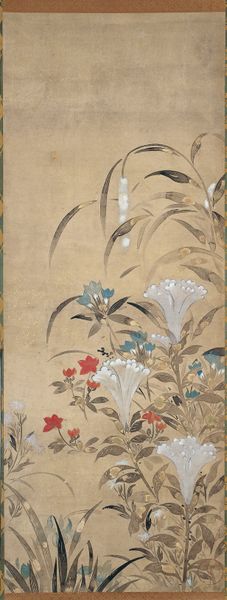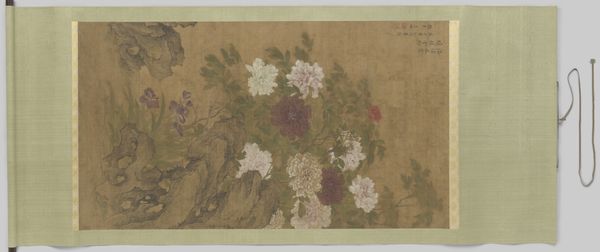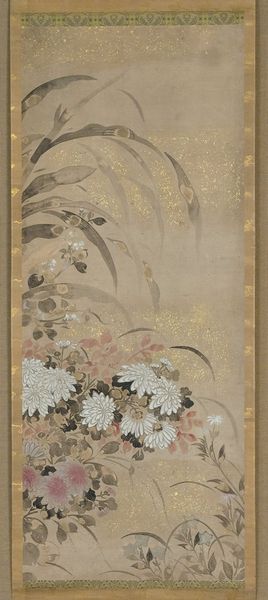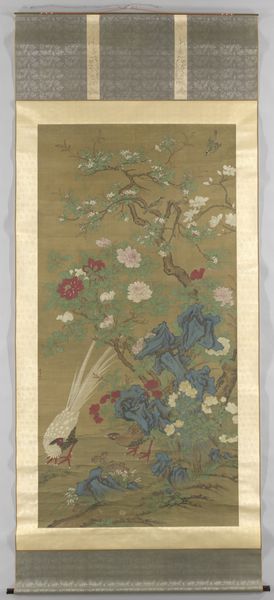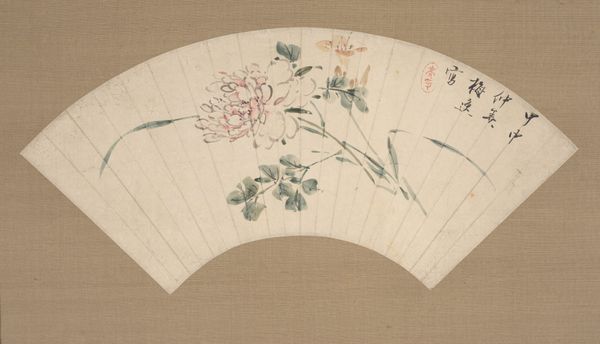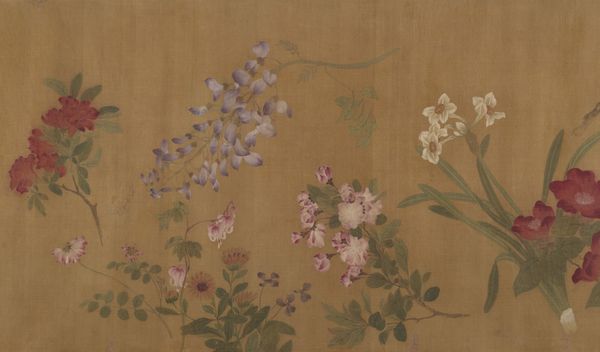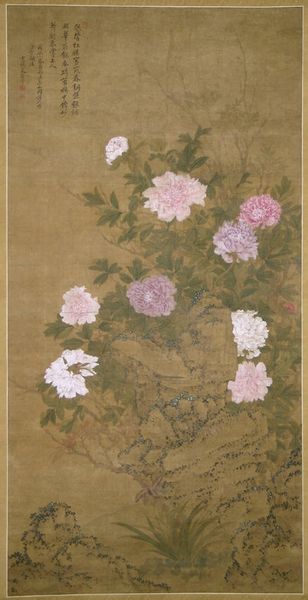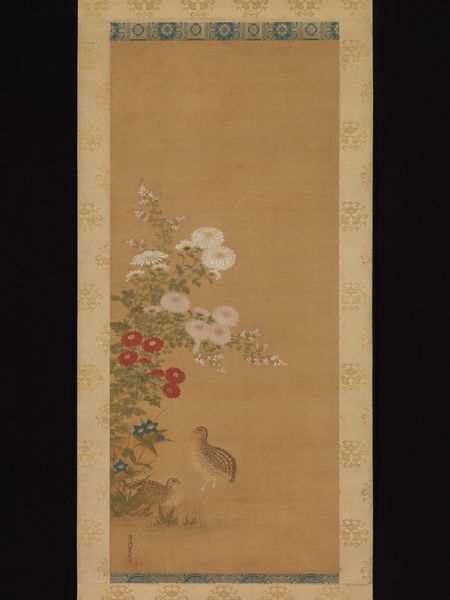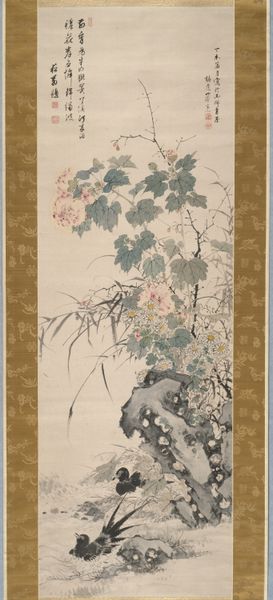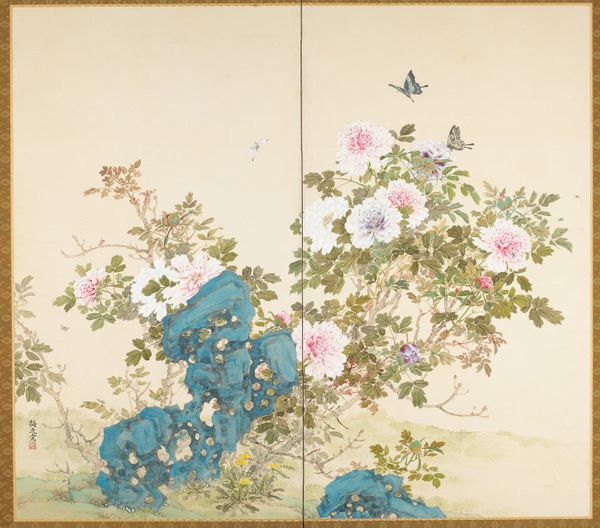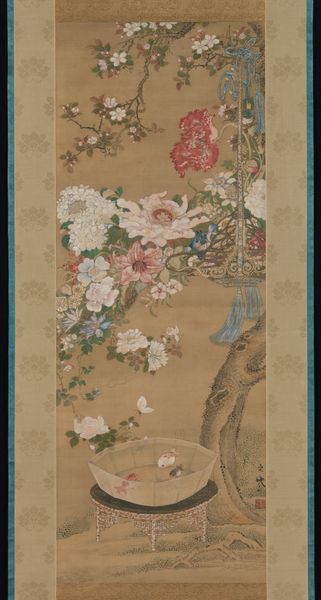
paper, watercolor, hanging-scroll, ink
#
water colours
#
asian-art
#
ukiyo-e
#
japan
#
paper
#
watercolor
#
hanging-scroll
#
ink
#
line
#
watercolor
#
yamato-e
Dimensions: 50 3/8 × 20 3/4 in. (127.95 × 52.71 cm) (image)85 3/8 × 26 5/8 in. (216.85 × 67.63 cm) (mount, without roller)
Copyright: Public Domain
Kitagawa Sōsetsu created this painting of mallows on paper during the Edo period in Japan. Sōsetsu, working in Kyoto, was deeply influenced by the Rinpa school, which revived classical themes with bold designs. But what does it mean to revive a classic? The Rinpa artists weren't just copying old styles. They were living in a time of immense social change as the merchant class rose in prominence. This shift challenged the established social hierarchy and norms. Artists like Sōsetsu found ways of subtly questioning social conservatism. The choice of mallows isn't accidental. In Japanese art, flowers often carry symbolic meanings. Sōsetsu references courtly art but complicates it through his distinctive naturalism. Careful research into the cultural meanings of mallows and the history of the Rinpa school helps us understand how this painting operated within, and subtly challenged, the artistic and social institutions of its time.
Comments
No comments
Be the first to comment and join the conversation on the ultimate creative platform.

